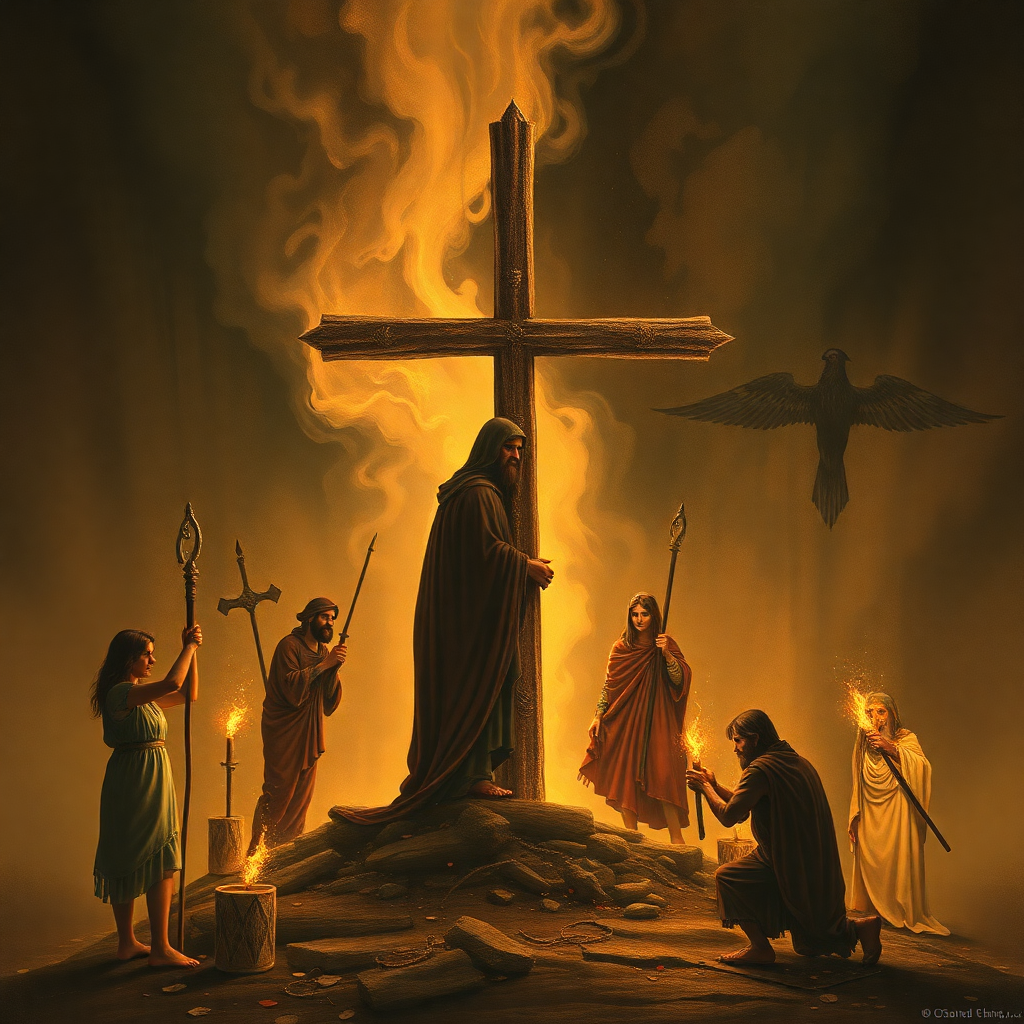Did Christianity come from paganism?
The cult of Osiris in ancient Egypt is often cited as an example, where Osiris dies and is resurrected, symbolizing renewal and the afterlife.
In this blog post, we will explore the similarities and differences between Christianity and paganism, the historical context of their development, and the complexities involved in understanding the origins of Christianity.
Understanding Paganism
Paganism, broadly speaking, refers to pre-Christian religions that were practiced in the ancient world, particularly in Europe and parts of Asia. These religions were typically polytheistic, worshiping multiple gods and goddesses connected to various aspects of life, nature, and human experience. Pagan traditions often included rituals, festivals, and a connection to the agricultural cycle, with deities who represented fertility, harvest, seasons, and natural phenomena. Each culture had its unique pantheon and theological beliefs, and these religions varied widely from one region to another.
Key characteristics of paganism included a strong emphasis on mythology, sacred rituals, and community celebrations. For instance, the Roman pantheon included gods like Jupiter, Mars, and Venus, while the Norse traditions worshipped Odin, Thor, and Freyja. These belief systems provided a framework for understanding the world and guiding moral behavior, much like Christianity would later do for its followers.

Historical Context of Early Christianity
To understand the relationship between Christianity and paganism, it is essential to examine the historical context in which Christianity emerged. Christianity developed in the first century AD within the Roman Empire, a region where various pagan religions coexisted. Jesus Christ, a Jewish teacher and healer, began his ministry in a predominantly Jewish context, emphasizing themes of love, repentance, and the Kingdom of God.
After Jesus' death and resurrection, his disciples spread his teachings throughout the Roman Empire, often encountering pagan beliefs and practices along the way. The early Christians faced immense challenges, ranging from persecution to theological confrontations with the existing religious paradigms. As Christianity grew, it began to adapt and respond to the cultural realities of the diverse populations it encountered, leading to the question of syncretism— the blending or merging of different religious traditions.
Commonalities Between Christianity and Paganism
In examining whether Christianity arose from paganism, it is crucial to acknowledge some similarities that have drawn attention. For instance, early Christian celebrations, such as Christmas, coincided with pagan winter solstice festivals honoring deities like the Roman god Saturn and the Norse god Odin. The incorporation of festive elements like feasting and gift-giving during these celebrations reflects a blending of traditions.
Additionally, some pagan mythologies include themes of death and resurrection, similar to the story of Jesus Christ. Many ancient religions featured dying-and-rising gods, which can lead to arguments of parallels between these myths and the Christian narrative of resurrection. The cult of Osiris in ancient Egypt is often cited as an example, where Osiris dies and is resurrected, symbolizing renewal and the afterlife.
Moreover, the concept of a savior figure, who brings hope and salvation to humanity, is present in several pagan religions. This observation has led some critics to suggest that early Christianity borrowed from these pagan narratives to attract followers. The portrayal of Jesus as a universal savior resonates with the broader human quest for meaning, which many religions, including paganism, addressed.
Theological Distinctions
While there are similarities between Christianity and paganism, significant theological distinctions set Christianity apart as a distinct faith. Christianity is a monotheistic religion centered on the belief in one God and the divinity of Jesus Christ. The concept of the Trinity—Father, Son, and Holy Spirit—is uniquely Christian. This foundational belief contrasts sharply with the polytheism of pagan religions, which often involved numerous gods with human-like characteristics and disputes among them.
Furthermore, the moral and ethical teachings of Christianity diverge from pagan practices. Christianity emphasizes love, forgiveness, and the teachings of Jesus, which often challenge the moral norms found in some pagan societies. For instance, while many pagan rituals involved sacrifices and various forms of worship, Christianity advocates for a personal relationship with God based on faith, repentance, and grace.
In addition, early Christian writings, such as the letters of Paul and the Gospels, articulate theological concepts that are not found in pagan beliefs. These writings delineate the nature of sin, salvation, grace, and the transformative power of faith in Jesus Christ. Christian doctrine derives much from Jewish teachings, adding distinctive elements tied to the life, death, and resurrection of Jesus.
The Role of Contextualization
Early Christians sought to make the teachings of Jesus relatable to different audiences, often employing common philosophical ideas, moral frameworks, and cultural symbols familiar to the populations they preached to. This contextualization led to the formation of local Christian practices that may appear to align with pagan traditions.
As Christianity spread throughout the Roman Empire, the church confronted pagan practices, sometimes assimilating aspects of local customs as avenues for evangelism. This dynamic tension between maintaining the faith's integrity and engaging with surrounding cultures has resulted in various interpretations of what it means to be a Christian today. While adaptation and influence exist, the essence of Christianity remains centered on the life and teachings of Jesus Christ.
Conclusion: A Complex Relationship
In conclusion, while there are similarities between Christianity and paganism, the assertion that Christianity emerged directly from pagan traditions oversimplifies the complex relationship between these belief systems. Christianity, with its monotheistic foundation, unique theological teachings, and profound emphasis on a personal relationship with God through Jesus Christ, developed as a distinct faith that responded to the cultural realities of its time.